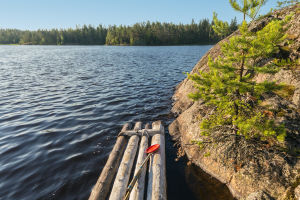A windmill, also known as a wind turbine, is a device that converts wind energy into electrical energy, making it a vital component of renewable energy production.
By harnessing the power of the wind, windmills have emerged as a sustainable and eco-friendly source of electricity.
The fundamental principle behind a windmill's operation lies in the interaction between the wind and its blades. When the wind blows over the blades, they are impacted, leading to their rotation.
This rotary motion is transmitted to the generator within the wind turbine, where electricity is generated through the process of electromagnetic induction. This electrical energy can then be harnessed to meet the electricity demands of homes, businesses, cities, and even entire countries.
Wind energy is recognized as a green and clean form of power generation. Its utilization helps reduce reliance on fossil fuels, resulting in reduced greenhouse gas emissions and a positive impact on mitigating global warming.
As a result, wind power generation has witnessed widespread adoption and implementation across the globe.
The historical origins of windmills can be traced back to ancient times, marking one of humanity's earliest endeavors to harness wind power.
The evolutionary journey of windmills can be classified into several key stages:
1. Ancient Windmills: The earliest traces of windmill usage date back to the ancient Greek and Roman civilizations in the 1st century BC. During this period, windmills were commonly employed to pump water and grind grain.
These primitive windmills were relatively simple in design, featuring a vertical shaft connected to rotating blades that responded to the force of the wind.
2. Medieval Windmills: Throughout the Middle Ages, windmills gained significant popularity across Europe. During this era, windmills were used for milling flour, pressing oil, extracting groundwater, and more.
The design of windmills diversified, with horizontal-axis windmills emerging as a more efficient alternative. This innovation facilitated the capture of wind energy and its conversion into useful mechanical work.
3. Dutch Windmills: The Netherlands is renowned for its iconic windmills, particularly during the 17th century. Dutch windmills were extensively employed for drainage purposes, reclaiming low-lying lands and creating fertile farmlands that contributed to the region's economic growth.
These windmills were primarily constructed from wood, featuring large airfoils that effectively harnessed wind energy to power water pumps through mechanical transmission.
4. Modern Wind Power Generation: In the late 20th and early 21st centuries, wind energy experienced a resurgence of interest driven by growing environmental consciousness and the quest for renewable energy sources.
Advancements in technology and design led to the development of modern wind turbines, offering a sustainable and efficient solution for power generation. Contemporary wind turbines can be classified into horizontal-axis and vertical-axis types, extensively deployed worldwide to provide clean and renewable electricity.
The Castilla-La Mancha windmills in Spain are a notable example of this historical legacy. Located in the autonomous region of Castilla-La Mancha, these windmills stand as a testament to traditional Spanish windmill architecture.
Immortalized in the literary masterpiece "Don Quixote," these windmills have become a symbol of Spain's cultural heritage, attracting tourists from far and wide. Additionally, the region's abundant wind resources have been harnessed not only for historical purposes but also to generate clean and sustainable energy for the present and future.
In conclusion, the history of windmills spans millennia, from their humble origins as simple machines for grinding grain to their transformation into modern wind turbines capable of generating clean and renewable electricity.
As technology continues to advance, wind power remains a promising solution in the pursuit of a sustainable and environmentally friendly future.


